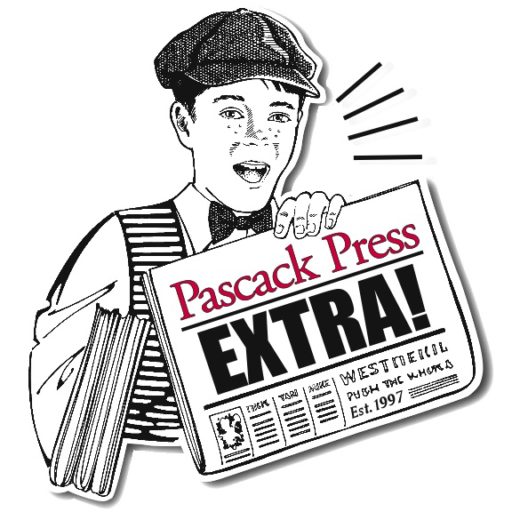
WESTWOOD—A borough survey that polled residents of the Pascack Valley on the impact the Covid-19 pandemic had on their commuting patterns and spending habits was a success, with Mayor Ray Arroyo reporting that 561 people participated July 30 through Sept. 4.
The results reveal what the mayor calls “significant ramifications on the local daytime population and traffic patterns.” The survey collected anonymous responses on commuting changes, frequency of shopping, dining, and receiving services in each of the towns within the Pascack Valley.
Arroyo told Pascack Press on Oct. 28 that the survey yielded “touchstones for new or amended land use and public parking policies. They represent significant dollars once spent out of the area that will now be spent locally — barring disruptions caused by resurgent public health threats and/or an economic recession.”
He said the survey gathered vital data to be used in planning, and would give local small businesses strategic insights into what customers want.
“How many commuters were now working from home? Would this be a short-term annoyance or a long-term ‘new normal’? What purchasing trends were transitory? Which ones might endure?” he asked.

From the answers to these questions, the borough sought to understand “ancillary impacts that might emerge from shifts in daytime demographics. What opportunities, or challenges, might they present for public safety, local land use and economic prosperity?”
To conduct the survey, Arroyo tapped Lauren Letizia, one of his 2020 Planning Board appointees, co-chair of Celebrate Westwood, and a member of his Economic Recovery Task Force.
The survey was promoted across social media, local distribution lists including Westwood Recreation and the Westwood Public Library, and printed in the Pascack Press. Invitations were also sent to all Pascack Valley mayors and clerks’ offices. The borough offered to share the results, which are represented in user-friendly graphs Letizia created.
Responses were received from Emerson, Hillsdale, Montvale, Park Ridge, River Vale, the Township of Washington, Westwood, and Woodcliff Lake. Westwood had 47% of respondents, Hillsdale represented 31%, Washington Township had 13%, and Emerson contributed 5%.
A total of 77% were aged 35–64, and 75% had worked full-time prior to the pandemic.
See “Westwood seeks valley’s input in work habits survey,” Pascack Press, July 30, 2021.)
“While this sample skewed slightly older than the greater Pascack Valley demographic, it succeeded in capturing a desirable slice of employed residents,” Arroyo said.
He added, “Most interestingly, before the pandemic-related shutdowns, just 10% of respondents always or mostly worked from home and just 0.2% were hybrid (this tracks identically with the 2020 US Census data for our area).”
As of September 2020 however, according to the mayor, 30% of respondents worked primarily from home and 23% were hybrid. “The ongoing underutilization of the borough’s commuter parking lot corroborates those numbers.”
Of those currently employed or seeking work, 24% expected to never return to working outside of the home every day. Arroyo said this parallels a June 2021 Fairleigh Dickenson University poll that indicated that 26% of New Jersey residents also expect to never return to their place of work.
Of the anticipated permanently remote workers in the Pascack Valley, 22.7% indicate a lack of dedicated office space. Arroyo said that fact could inform a renewed focus on shared work spaces in the borough, which also featured in the most recent Master Plan review.
Arroyo called out a finding he said was “most striking” for the Westwood small business community: More than 65% of respondents indicate an increase in spending on retail, dining, and services close to home when working from home, as compared to when commuting.
Most significant jumps were in the categories of “take out meal, deli, pizza, or fast food,” “public services,” “groceries,” and “retail shopping.”
Increases of 7% to 15% were reported across “sit-down restaurants,” “ice cream, bakery or other sweets,” “personal services,” “healthcare,” “wellness services,” “entertainment,” and “bars.”
Respondents reported a 55% decrease in seeking prepared lunch outside of the home when working from home — but a 105% increase in dinner as a prepared meal.
Borough works the numbers
Arroyo told Pascack Press, “Since taking office in January 2020, I have encouraged the use of data to inform the decisions made by our borough government. We have since employed ParkMobile, which offers instant feedback on the parking utilization rates in our downtown parking stalls.”
He added, “For instance, our Central Business District’s (CBD) overall parking utilization, September 2019 versus September 2021, is down +/- 15 % (excluding the commuter lot). This is useful information when considering new development proposals, or when projecting Parking Authority revenues for budgeting purposes.”
Throughout the pandemic, Arroyo said, he has remained in close contact with Westwood’s Office of Emergency Management, Health Department, and Pascack Valley Medical Center to report on “hyperlocal rates” of infection and vaccination trends.
As of Oct. 25 there was one Covid-19 in-patient at PVMC, and the state’s transmission rate, at 0.82, was still well below 1.0; even as school is back in session and indoor business activity has picked up, Arroyo said.
“Also, since early 2020, I have been getting regular reports on the vacancy/occupancy rates within the CBD from Celebrate Westwood (CW). I wanted to track the efficacy of the governing body’s package of restriction-easing resolutions, intended to prop up locked down local businesses. And to better understand Westwood’s resiliency during this period of economic uncertainty. The CBD is net positive five new businesses since this tracking began in January 2020,” he added.
Arroyo said he and Letizia reviewed the survey results with Westwood Borough Planner Ed Sneikus of Burgis Associates, who is also looking into another database: the ESRI Report. “This tool assembles a comprehensive local/regional data set, which we hope to reference in assessing/affirming the economic viability of Planning Board recommendations.”
The mayor said he’s tasked Sneikus with reviewing the Planning Board’s pre-pandemic Master Plan recommendations against “these post-pandemic ripples to see what land uses the borough might re-prioritize, adjust, or amend in the coming year.”
He thanked Letizia “for creating and shepherding the survey through to completion,” and all who participated.
